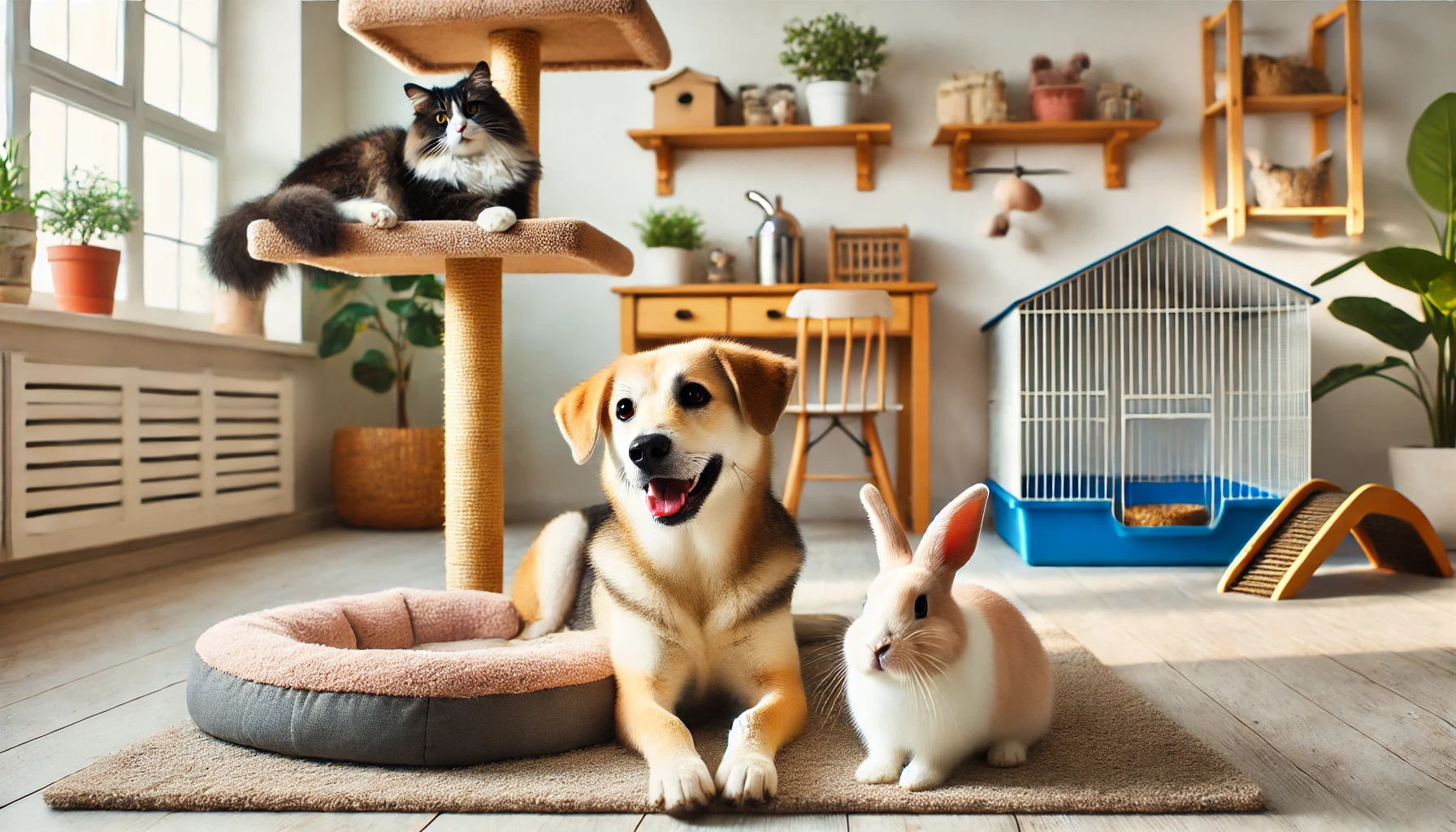Managing a multi-pet household can be an immensely rewarding experience, but it also comes with unique challenges. From ensuring harmony among pets to balancing individual needs, creating a peaceful and happy environment for your furry companions requires patience, organization, and understanding. This guide provides actionable strategies to help you successfully manage a household with multiple pets, ensuring they thrive together.
Understanding the Dynamics of a Multi-Pet Household
Each pet in your home has its own personality, preferences, and needs. These differences can influence how they interact with each other and their environment.
Factors Influencing Multi-Pet Dynamics
- Species: Dogs, cats, and small animals like rabbits or guinea pigs have distinct behaviors and communication styles.
- Age: Older pets may prefer quiet and routine, while younger ones are often more playful and energetic.
- Breed or Temperament: Some breeds are more social, while others may need extra time to adjust to new companions.
- Health Status: Pets with medical conditions may require special attention, which could lead to tension if other pets sense vulnerability.
Understanding these dynamics helps you anticipate and address potential conflicts before they arise.
Introducing New Pets
Adding a new pet to your household is an exciting event, but it must be handled carefully to ensure a smooth transition.
Step-by-Step Introduction Process
- Prepare a Neutral Space
- Choose a neutral area for the first meeting, away from places where existing pets feel territorial.
- Use Gradual Introductions
- Start with short, supervised interactions and increase the time gradually.
- Keep the new pet in a separate space initially, allowing existing pets to sniff and observe from a distance.
- Monitor Body Language
- Look for signs of comfort, such as relaxed postures and wagging tails.
- Watch for signs of stress or aggression, like growling, hissing, or stiff body language.
- Use Positive Reinforcement
- Reward all pets with treats and praise for calm and friendly behavior during interactions.
- Be Patient
- Adjust to the pets’ pace. Some may bond quickly, while others may need weeks or months to accept a new companion.
Creating a Balanced Environment
1. Provide Individual Spaces
Each pet should have access to their own personal space where they can retreat and relax.
- Beds and Crates: Ensure each pet has their own bed, crate, or hiding spot to feel secure.
- Feeding Stations: Set up separate feeding areas to prevent competition or food aggression.
- Litter Boxes: For cats, provide one litter box per cat, plus one extra, and place them in quiet, accessible locations.
2. Meet Dietary Needs
Pets in the same household may have different dietary requirements.
- Feed pets with specific needs separately to ensure they eat the correct food.
- Use slow feeders or microchip-activated bowls to prevent food theft.
Managing Interactions Between Pets
Encouraging Positive Relationships
- Supervised Playtime
- Provide opportunities for pets to interact during play but always supervise, especially in the early stages.
- Shared Activities
- Engage in activities that all pets can enjoy, such as group walks (for dogs) or interactive toys that allow simultaneous play.
- Equal Attention
- Spend quality one-on-one time with each pet to prevent jealousy and build strong bonds individually.
Addressing Conflict
Even in well-managed households, occasional disagreements may occur.
- Recognize Triggers
- Identify situations that lead to conflict, such as competition for food, toys, or attention.
- Remove triggers or address the root cause, like adding more toys or feeding areas.
- Intervene Calmly
- Avoid shouting or aggressive actions during a conflict. Instead, use a calm voice to redirect their attention.
- Seek Professional Help
- If conflicts persist, consult a veterinarian or animal behaviorist for guidance on managing aggression or tension.
Promoting Mental and Physical Stimulation
Pets in multi-pet households often require more stimulation to stay happy and avoid destructive behavior.
Interactive Play
- Use toys that cater to multiple pets, such as laser pointers for cats or fetch balls for dogs.
- Rotate toys regularly to maintain their interest.
Training and Enrichment
- Train pets together for basic commands to reinforce positive behaviors.
- Provide puzzle feeders or treat-dispensing toys to engage their minds.
Exercise Opportunities
- Schedule daily walks or outdoor play sessions for dogs.
- Create vertical spaces for cats to climb and explore.
Handling Special Needs in Multi-Pet Households
Senior Pets
- Provide quieter spaces for older pets who may need more rest.
- Ensure they have easy access to food, water, and litter boxes to reduce strain.
Pets with Medical Conditions
- Administer medications and treatments in private to avoid interference from other pets.
- Monitor their interactions to ensure they are not being stressed or overpowered by more active companions.
Maintaining Harmony
Keeping the peace in a multi-pet household requires ongoing effort and awareness.
Establish Consistent Routines
- Pets thrive on routine, so maintain regular feeding, play, and rest schedules.
Monitor Health and Behavior
- Regularly check all pets for signs of stress, illness, or changes in behavior.
- Schedule routine veterinary visits to address health issues promptly.
Be Patient
- Remember that every pet is different and may take time to adjust to living with others.
When to Seek Professional Help
Sometimes, managing a multi-pet household may require outside expertise.
- Animal Behaviorist: If conflicts escalate or behavioral issues persist.
- Veterinarian: For health concerns that may be affecting a pet’s behavior.
- Trainer: To address obedience or socialization challenges.
Conclusion
A harmonious multi-pet household is built on patience, understanding, and proactive management. By addressing each pet’s individual needs, fostering positive relationships, and maintaining a structured environment, you can create a home where all your pets thrive together. The effort you invest in building these bonds will result in a household full of love, companionship, and joyful interactions.

